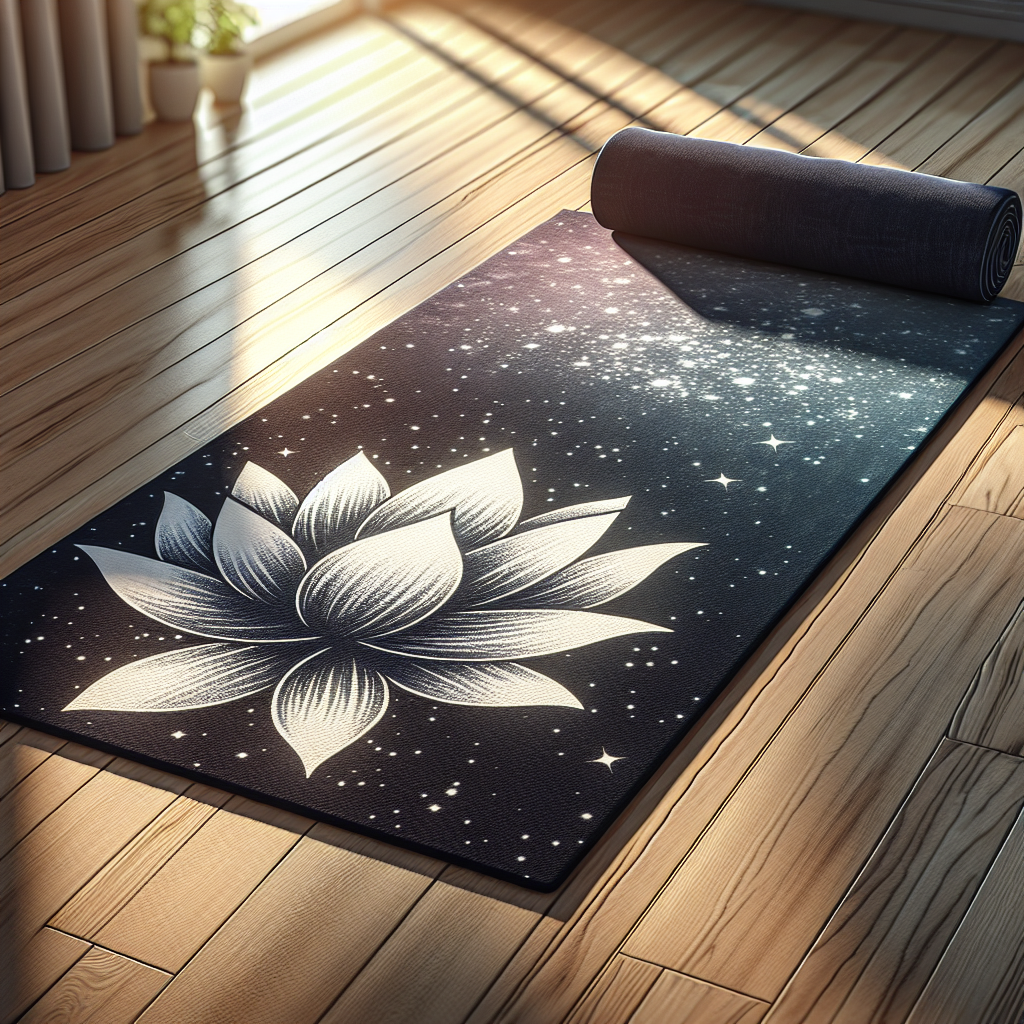
Yoga has transcended from a mere physical exercise to a holistic lifestyle encompassing mental well-being, emotional balance, and physical fitness. A key component of this practice is the yoga mat—an essential tool that provides stability, cushioning, and support. But have you ever considered the science behind the materials in your yoga mat? Choosing the right yoga mat can enhance your practice, improve comfort, and even contribute to sustainability. Let’s delve into the materials commonly used in yoga mats and their respective benefits.
1. PVC (Polyvinyl Chloride): The Traditional Favorite
PVC, or vinyl, has long been a staple in the yoga mat industry due to its affordability, durability, and accessibility. These mats offer excellent grip and cushioning, making them suitable for various styles of yoga, from gentle Hatha to vigorous Vinyasa.
Pros:
- Durability: PVC mats can last for years without significant wear and tear.
- Affordability: Generally cheaper than other materials, making them accessible for beginners.
- Good grip: Specialized designs often enhance traction, helping to prevent slipping.
Cons:
- Environmental Concerns: The production and disposal of PVC mats can be harmful to the environment, releasing toxic chemicals.
- Chemical Odors: New PVC mats sometimes have a strong smell due to manufacturing processes.
2. TPE (Thermoplastic Elastomer): The Eco-Friendly Alternative
TPE is becoming increasingly popular as an eco-friendly alternative to PVC. It’s made from non-toxic and recyclable materials, making it a great choice for environmentally-conscious practitioners.
Pros:
- Eco-Friendly: Non-toxic and free from harmful chemicals, TPE mats are widely regarded as a safer option.
- Lightweight: Typically lighter than PVC, TPE mats are easier to transport and handle.
- Good Traction: Offers decent grip and cushioning for a variety of yoga styles.
Cons:
- Durability: While TPE mats are more sustainable, they may not last as long as PVC mats, especially with regular use.
- Limited Availability: TPE mats may not be as readily available in all markets.
3. Natural Rubber: The Biodegradable Champion
For those seeking a more organic option, natural rubber mats are an excellent choice. These mats are converted from tapped rubber trees and are completely biodegradable, making them a sustainable favorite among yogis.
Pros:
- Natural Material: Biodegradable and often free from synthetic chemicals and toxins.
- Great Grip: Natural rubber mats provide excellent traction and grip, especially when wet.
- Cushioning: Offers a good degree of cushioning, making them comfortable for longer practices.
Cons:
- Weight: Heavier than TPE and PVC mats, making them less portable.
- Allergic Reactions: Some individuals may have latex allergies, making these mats unsuitable.
4. Cork and Jute: The Sustainable Duo
For a unique blend of sustainability and style, cork and jute mats are gaining popularity. Cork, harvested from the bark of cork trees, is a renewable resource. Jute, a plant fiber, is another eco-friendly material that is often combined with cork for added durability.
Pros:
- Sustainable Materials: Both cork and jute are renewable resources that contribute to an eco-friendly lifestyle.
- Natural Aesthetic: These mats often feature a beautiful, natural appearance that can enhance your yoga space.
- Good Grip: Cork offers a non-slip surface, while jute provides durability.
Cons:
- Maintenance: These materials may require more upkeep to preserve their integrity, such as avoiding excess moisture.
- Weight: Similar to natural rubber, cork and jute mats can be heavier than synthetic alternatives.
5. Microfiber: The Soft Touch
Microfiber mats are often used in combination with other materials to enhance the grip and absorbency. While they may not be the primary material, they play a vital role in hot and restorative yoga practices.
Pros:
- Absorbent: Ideal for sweaty sessions, microfiber mats absorb moisture effectively.
- Soft Texture: Offers a plush surface that is gentle on the skin.
- Easy to Clean: Often machine washable, they are easy to keep fresh and hygienic.
Cons:
- Durability: They may wear down faster than thicker, more robust mats.
- Less Traction Without Moisture: Grip can diminish without moisture, affecting stability in various poses.
Conclusion
Choosing the right yoga mat is about more than just personal preference; it’s a decision rooted in the science of materials. Understanding the pros and cons of each type allows you to make an informed choice that enhances your practice. Whether you prioritize eco-friendliness, durability, or grip, there’s a yoga mat out there to elevate your routine. As you roll out your mat for the next session, appreciate the thoughtful engineering behind it, and let it support your journey towards holistic wellness. Namaste!



